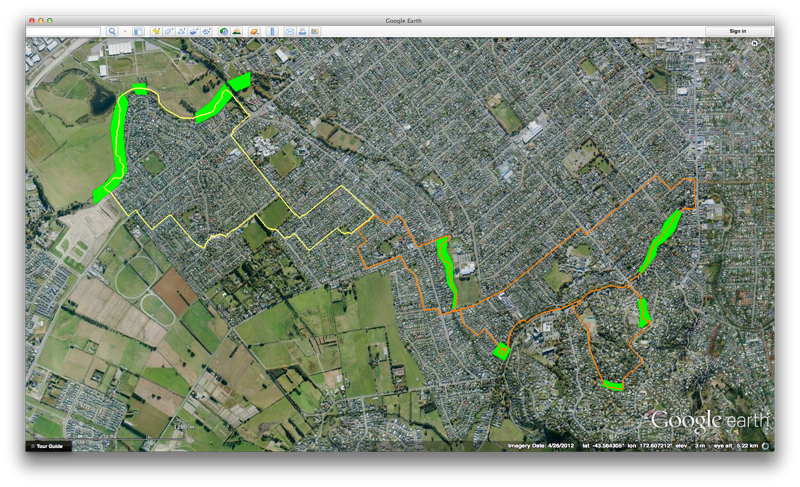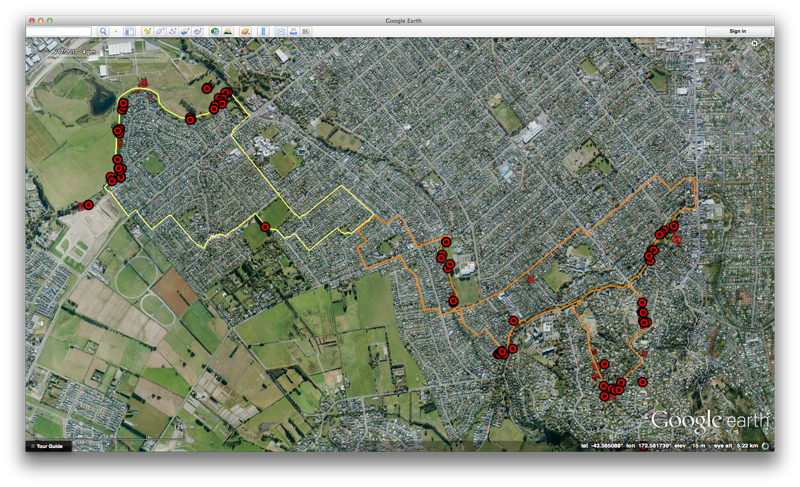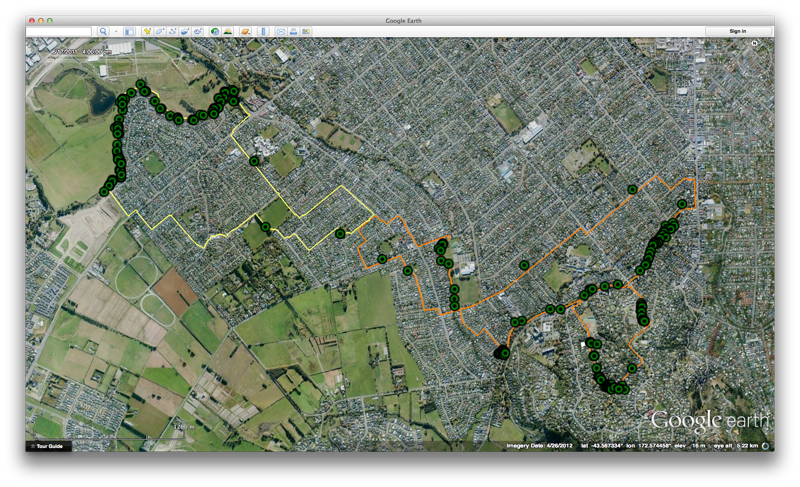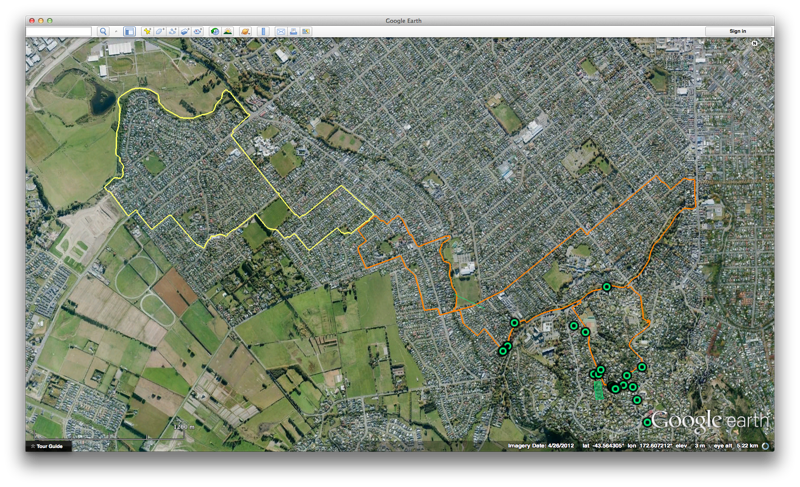RECENT ARTICLES
- CEBRA: An optimised and standardised sampling protocol for BioBlitz
- Stop it people, the plural of anecdote IS data!
- That's no pollinator, that's a flower visitor
- Add a scale to your macro photos
- What to photograph when counting the wild
- Imagine counting the wild on EVERY street in a city!
- My wild counting workflow
- A butterfly flew through
- Why iNaturalist observations without photos can be research grade
- Why you shouldn’t use a spreadsheet for data entry
- All articles ...
Native forest birds need forest in Christchurch city, New Zealand
The native forest birds that occur in urban Christchurch are largely found in the city’s few small patches of native forest. Go figure.
written Dec 5, 2013 • by Jon Sullivan • Category: Wild Changes

Since 2008, I’ve been counting native forest birds on my weekly run through suburban Christchurch. Each week, I run half of my 19 km route between the Cashmere Hills and the Wigram retention basin in southwestern Christchurch. I began by noting all native birds of those species still here that would have lived in the forests of Christchurch (Ōtautahi) prior to people. For Christchurch city, this now usually only means fantails (piwakawaka), grey warblers (riorio), bellbirds (korimako), occasionally kererū (NZ wood pigeon), and very rarely kingfishers (kōtare) and shining cuckoo (pipiwharauroa).
When I started, I expected to show some interesting seasonal changes and eventually some long-term population trends. What I didn’t anticipate was just how striking the spatial pattern would be: native forest birds are where the forest is.
Any bird-keen resident of Christchurch will have noticed how the most adaptable native birds, like fantails and grey warblers, can occasionally be seen or heard in Christchurch’s gardens and oak tree-lined grassy parks. However, it looks like most of the time they’re just passing through those areas. My run observations show clearly that these birds are still almost completely confined to the city’s small patches of forest-like habitats. These are mostly small strips of planted native trees and shrubs. That is an uncommon habitat in the city although there’s much more of it now than there was even 20 years ago.
The pattern is best illustrated with some maps. The maps below show my bird observations from 134 runs between the start of 2009, when I started adding my bird counts to a map, until early 2012.
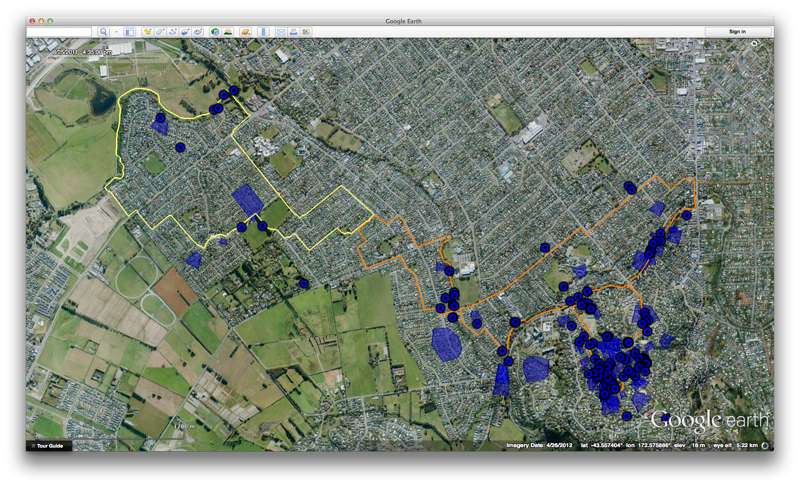
There are some interesting differences among the species on the maps. Fantails and grey warblers are across the city, but largely concentrated in the forest-like places, while kererū are restricted to the Cashmere hills. The bellbirds are also mostly in the hills although they roam out into the lower suburbia when large nectar sources are available, especially flowering trees of Eucalyptus and Banksia integrifolia.
There’s been quite sensible talk about cats and rats and other mammalian predators limiting native bird numbers in Christchurch. From what I’ve been told, nesting attempts by fantails in the city typically fail. City council ornithologist Andrew Crossland has convincingly made the case that the city council-funded predator control in places like Kennedy’s Bush in the Port Hills is primarily responsible for the increase especially in bellbird numbers in Christchurch city in recent years.
Nevertheless, the striking patterns of the birds on my runs strongly suggest that increasing the area of forest habitats in Christchurch would also greatly increase the numbers of some native birds. While more predator free areas and more forest in and around Christchurch would make a huge difference, just adding native woody vegetation to more of the city’s many open oak-daffodil-grass parks would help, a lot.
Just look below at the near absence of grey warblers and fantails in the traditional English-style Christchurch parks like Hoon Hay Park and Gainsborough Park compared with their relative abundance in Centennial Park, Ashgrove Reserve, Ernle Clark Reserve, and the Wigram retention basin.
The difference is night and day (or perhaps England and Aotearoa).
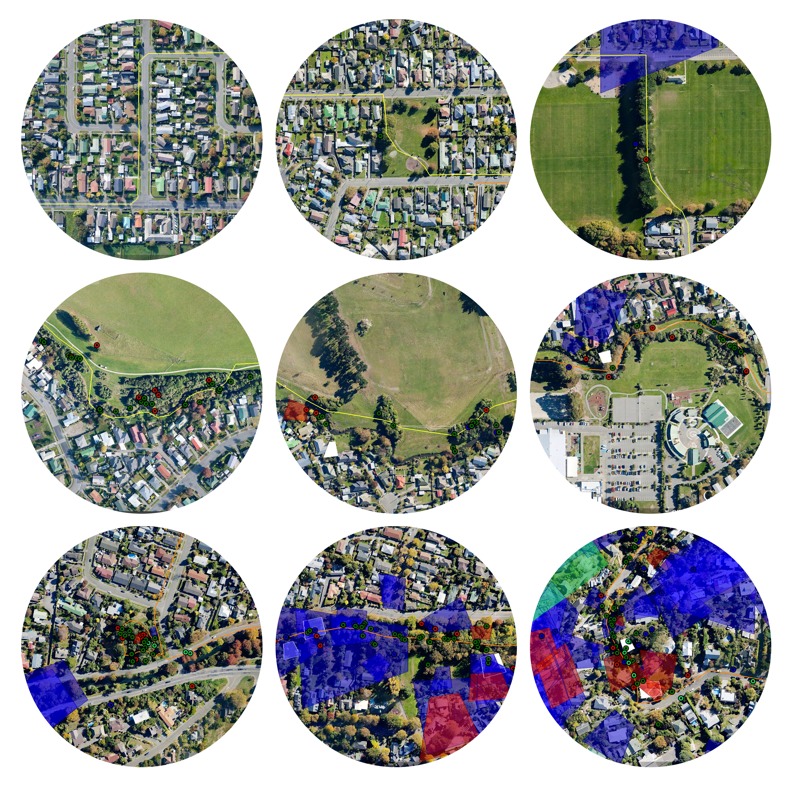
2012SullivanFIG_3.png)
